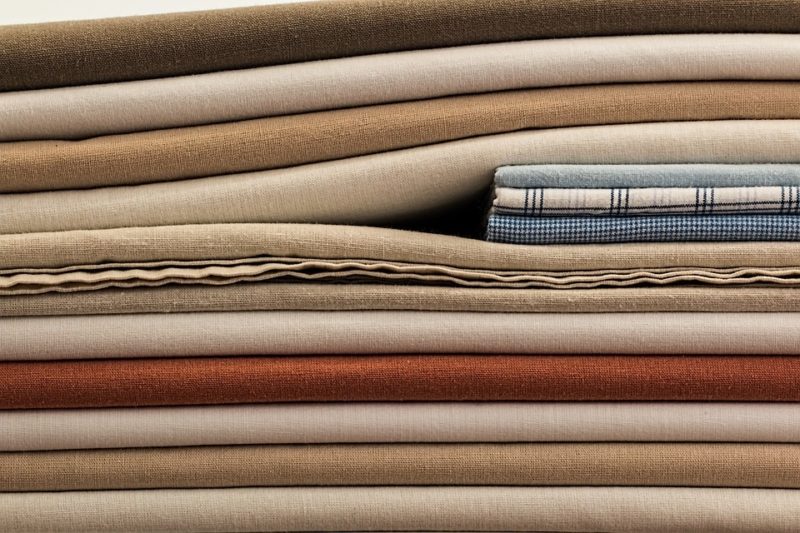The answer to what is understitching in sewing is that you use it to keep garments flat. It is so-called because you put the stitch at the top of the facing or lining. We’ll help you understand it in more detail below, and you’ll also find out if it’s necessary to understitch.
What about topstitching? The good news is we also discussed this sewing technique in a separate article. So please read how to topstitch with a sewing machine and find out its uses.

What Is Meant By Understitching In Sewing?
Understitching is a technique of sewing a straight stitch on the top of the facing at about a ¼ inch distance from the seam. You will find it on the garment’s lining to finish it after connecting the lining to the raw edge. Therefore, understitching is a way to finish the facing professionally and keep it from showing up to the front of projects like clothing.
Benefits of understitching
- Prevents the lining or facing of garments from rolling up and becoming visible
- Keeps the area where the facing attaches to the seamline flat
- Gives projects with linings a clean and professional finish because the understitching is not visible outside the clothing
Is Understitching Necessary?
If you’re wondering why is understitching important, it’s necessary when making clothing and garments. It prevents the facing from showing up on the areas like the neckline, armholes, and waistbands to give them a professional-looking finish and keep the clothing from riding up and looking poorly fitted. Furthermore, you are securing the lining in place with understitching so the outside looks clean and projects like covers will sit flat perfectly despite having a turned edge.
Understitching vs bias tape
Since understitching keeps the linings of garments from riding up and ensures that projects remain flat, it shouldn’t be skipped. But if you want an alternative to understitching, consider finishing your projects with bias tape. Put the bias around where you’ll understitch, but expect to see a row of stitching from the edge of where you put it than understitching where the stitches are invisible outside the fabric.
What Is The Difference Between Understitching And Topstitching?
Understitching vs topstitching
Understitching refers to the stitching along the seam where the facing attaches to prevent the edges from showing to the front of the garment. On the other hand, topstitching is often used for decorative interest as the sewer uses a longer stitch length than the rest of the project. Understitching is also not seen to the right side of the project, while topstitching even uses heavier thread and sometimes contrasting color than the fabric to make it stand out more at the front.
What is edgestitching?
Another term that you might hear is edgestitching, and it’s a narrow stitch that is around ⅛ inch away from the edge. It’s used on projects to add a subtle detail while also stabilizing the seams. You might also consider understitching as an edgestitch, but edgestitch itself is not an understitch.
Do you want to finish your project’s seam without it showing? Then, read our tutorial on how to sew a hidden seam with a sewing machine.
How Do You Do Understitching Stitch?
- Open the facing and separate it from the main part of the project
- Set the sewing machine stitch length to 2.0 and use the correct thread, needle, and foot
- Sew the facing on the right side with a sewing machine as close to the edge as possible without leaving the facing itself
- Make sure to catch the seam allowance underneath, and the row of the understitches is about ⅛ away from the seam on the side of the facing
- Sew as close as you can and stop when understitching a corner
- Press the facing inside the clothing to finish
What Foot Do You Use For Topstitching?
The foot you use when topstitching is the topstitching foot. It has a blade in the center that you can align along the seam line. For example, you can use the topstitching foot to have the perfect stitch in the ditch topstitching because the blade and needle will always be aligned, being both in the center position. But what sewing machine foot should you use when understitching?
You can use an all-purpose sewing foot when topstitching. The good news is it’s unnecessary to use a specialty foot for this sewing technique.
What Is The Opposite Of Topstitching?
One can say that the opposite of topstitching is understitching simply because topstitching is considered decorative and meant to show on the right side of the garment. On the contrary, understitching is not visible at the front of the clothing, and it’s meant to stabilize the lining underneath. Another decorative stitching is also edgestitching, but it’s closer to the seam than the wider topstitching.
Conclusion
Does this article help you? We answered what is understitching in sewing and discovered that it’s a straight stitch that you must add after connecting the lining to the raw edge of the fabric. This way, the lining won’t show up, especially on clothes.
Overall, understitching is crucial because it stabilizes the project’s lining and keeps the material flat. In addition, it’s relatively easy to do after you sew the lining, especially with a sewing machine. If you have more questions, leave them below or browse our blog for other helpful sewing techniques.
